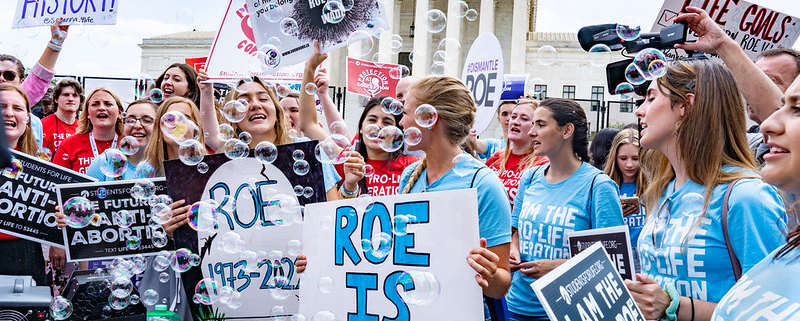The repeal of Roe v Wade highlights the need to change the way we choose Supreme Court justices and their terms of service
The American justice system is imperfect. That’s why it’s constantly being reformed. Factor in the necessity to make decisions partially based on empirical evidence and consulting experts, but more importantly competing ideological and political forces, then you realize why the process is slow.
Over time there is change. Not wholesale change, and not always in the direction of the way that majority of the population wants.
Meanwhile some reforms are more pressing than others.
The recent Supreme Court of the United States (SCOTUS) decision (June 2022) regarding Roe v Wade has numerous negative and devastating implications for women (and men) living in this country.
The fact that 61 percent of the American public alone believe that abortions should be legal, means that the recent SCOTUS decision, in the context of Roe v Wade, is out of sync with the opinions held by a large number of Americans. This begs numerous questions.
But let’s start with why this ruling occurred? We could blame larger forces that are present in American society such as patriarchy, Christian Fundamentalism, and the Republican Party. Or, we could point the finger at individuals such as former president Donald Trump, Senate Republican leader Mitch McConnell, etc.
Regardless, we would probably not be in the position we are currently in if the method by which we chose Supreme Court justices, and the manner by which they serve their terms, were reformed.
To begin with, it is generally understood that the SCOPUS is responsible for ruling on the constitutionality of laws that are passed by the legislature and/or the executive. On the one hand, the public is told that the justices’ decisions are based on the law, including precedent, and thus relatively value free. And because there are several justices, and not simply one, its believed that the more extreme views can be held in check through the voting process. On the other hand, we also know that the justices are influenced by their political beliefs and considerations. In short, they are ultimately loyal to the political parties that secured their nomination and conferred their appointment.
The process by which Supreme Court justices are chosen, and the duration of their tenure mitigates against value free judicial decisions. How so? In general, when a Supreme Court justice position comes open, nominees for the position are put forward to a committee of the Senate on the judiciary, which is composed of representatives from the two major political parties. The committee vets the candidates in a highly charged primarily partisan manner. The recommendation then goes to the Senate and the political party that has the most amount of votes gets to choose their candidate.
Meanwhile, although there are valid arguments for Supreme Court Justices to occupy their positions for relatively lengthy time periods, the appointment as a SCOTUS justices is for life. In other words, the individual continues to rule on legal matters long after the current party in power controls the senate. And in most cases they rule on matters that align with the political party that put them into power.
Thus, how does one increase the fairness of the decision that SCOTUS makes?
Since the creation of the SCOTUS, many mechanisms have been developed to determine the appropriateness of job candidates. Some, but not all, might be used to determine the suitability of the Supreme Court judges, other than the ones we currently use
Most countries that have judicial review of the constitutionality of laws that are passed (or implemented), also have components similar to the SCOTUS built into their political fabric. They also have differing methods to choose the individuals that review the laws.
There are a number of recommendations that have been advanced that might improve SCOTUS, in particular the manner by which we appoint justices, and the terms of justices? They include:
Defund the Supreme Court. If we limit the resources that this fourth branch of government has access to, then This is a cute way of suggesting that if you restrain their resources they can’t do so much damage. In principle this may make sense but in the long run won’t work.
Increase the number of Justices. In principle, the greater the number of qualified people making an important decision, the higher the likelihood that the decision will be a good one. This is a suggestion that has been bandied around Washington for the past three years. But increasing the number of justices does not really help with the partisan obligations that justices feel, nor does it assist with putting a cap on lifetime appointments.
Direct vote Some may argue that justices should be elected based on the popular vote. The public, however, is not sufficiently qualified to judge judges knowledge and ability. Despite many jurisdictions in the United States ability to elect judges for lower court duties, being a Supreme Court justice is not a popularity contest. In other words, they must make tough decisions.
Term limits One of the most favorable options is limiting the length of time that they can serve as Supreme Court Justices. One suggestion might be, similar to the president of the United States, no longer than eight years.
Now that we have some suggestions, it’s time for President Biden and the Democratic Party to take the issue of SCOTUS reform seriously. This is not an easy challenge to solve or fight to win, but Biden has a little more than two years left in his term, and depending on the results in this November’s mid term election, he needs to initiate a more intense discussion and even some changes in the composition of the courts.
Photo Credit: Victoria Pickering
Roe overturned
In front of the Supreme Court as the decision announced in Dobbs that overturns Roe v Wade












